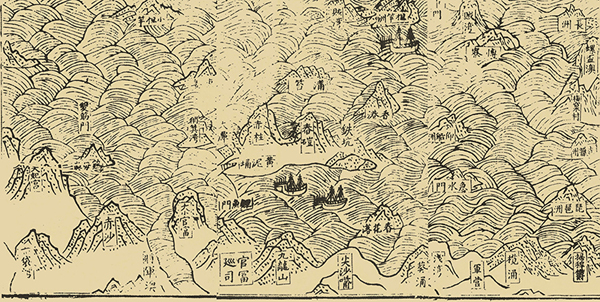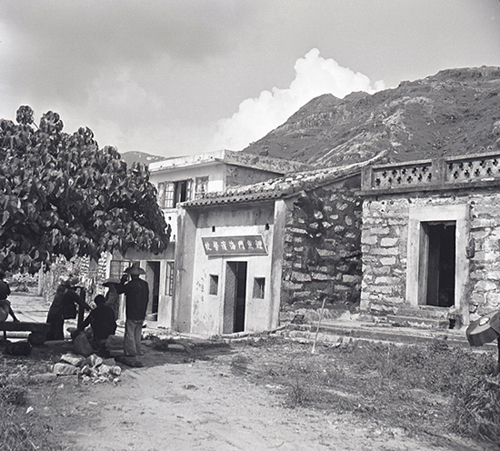Tale of Lei Yue Mun and Hoi Bun School
Tale of Lei Yue Mun
Are there actually carps (literally “Lei Yue” in Cantonese) swimming in these waters? On the naming of Lei Yue Mun, there are different explanations. Some say that within this village, there used to be two carp-farming ponds resembling a pair of fisheyes. Others say that the Kowloon Bay waterway (now known as Victoria Harbour) resembled a plump carp with the narrow channel of the Lyemun Pass being its mouth, and the Fish Tail Stone near Hoi Sham Temple representing its tail emerging from the waters. Another theory suggests that the rocks on both sides of the Lyemun Pass resemble a school of carp. Take a look and see if you agree!
Lyemun Pass was first recorded on the Coastal Map of Guangdong in “Yue Da Ji” in the 16th century. It originally referred to the strait separating the northeast of Hong Kong Island from the southeast of Kowloon and the land on both sides of the Pass was later referred to as Lei Yue Mun. Nowadays, "Lei Yue Mun" usually refers to Lei Yue Mun Village located in the east of Kowloon, including Sam Ka Tsuen and Ma Wan Tsuen.
 Lei Yue Mun shown on the Coastal Map of Guangdong in "Yue Da Ji" recorded published in 1598.
Lei Yue Mun shown on the Coastal Map of Guangdong in "Yue Da Ji" recorded published in 1598.
Hoi Bun School
 Hoi Bun School in the 1940s
Hoi Bun School in the 1940s(Photo source: University of Hong Kong Library)
(Photo source: University of Hong Kong Library)
Since the early 18th century, a group of Hakka stonemasons began to settle in Lei Yue Mun Village. Over the years, there were four schools established by different organisations in the village, including the community-funded "Enlightenment School" and "Hoi Bun School," as well as the religiously-sponsored "St. Philip's School" and "Tak Kei Kindergarten." Among them, the "Hoi Bun School" has the longest history.
The predecessor of Hoi Bun School was a traditional private school which was commonly called as “the Enlightenment School” which was established in 1920 and was the first village school providing basic education for local children in Lei Yue Mun Village. In 1936, the school was registered as "Lei Yue Mun School." As Lei Yue Mun Village was predominantly inhabited by Hakka people in the early days, classes were conducted in Hakka dialect with traditional Confucian classics such as “Three-Character Classic”, “The Four Books and The Five Classics”, Tang poetry, and “ Zhu Xi's Mottos” as textbooks. During World War II, the school building was destroyed and many villagers fled Hong Kong, resulting in the school's closure. After the war, as villagers returned and the number of school-age children gradually increased, the villagers raised funds to rent a private house near the seaside and established the "Hoi Bun School" in 1946. The name “Hoi Bun” means “The sea of learning is endless, the harbour front is the beginning”. Due to the growing population of local school-age children, villagers raised funds for the construction and expansion of the school in 1953 and 1960 respectively. The 1970s marked the peak period for the school, with over 500 students enrolled. However, due to a decrease in local population, the school reduced the number of classes and finally ceased operations in 2008 in line with the government's educational policy. The school building was revitalised into other uses.